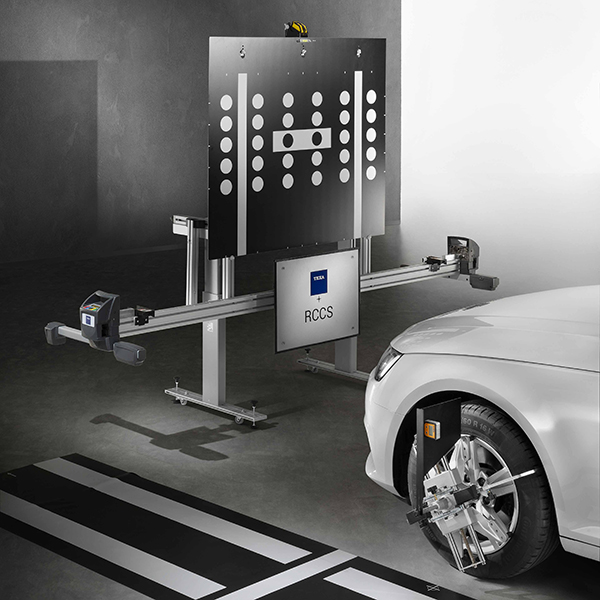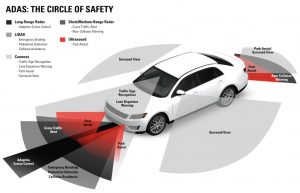ADVANCED DRIVER ASSISTANCE SYSTEMS (ADAS)
The team at Sunshine Coast Windscreens offer ADAS Vehicle Calibration services to ensure your vehicle meets the current safety standards required by law.

Advanced Driver Assistance Systems (ADAS) provide drivers with the required levels of automated safety features expected in today’s modern vehicles.
The surge of ADAS features in modern day cars support braking, steering, and assist in avoiding collissions with other motorists.
As ADAS technology improves, the team at Morayfield Windscreens will continue to invest heavily in ADAS technology and offer the ability to accurately calibrate your car to exacting standards.
The functions of ADAS features rely on sensors that continuously and accurately monitor the environment around the vehicle, making these sensors a safety-critical aspect of any repair process.
The system is small work of genius that notices when you’re not doing your job with the stop pedal quickly enough, and does it for you. Not only that, but it does it so well that it will, on some cars, prevent you from having any rear-end accidents, ever, at speeds of up to 60km/h.
An adaptive cruise control system, also known as active cruise control, helps mitigate those risks by automatically adapting to changing traffic conditions, slowing down or speeding up with traffic as needed.
Traffic Sign Recognition (TSR) is an in-vehicle technology which attempts to read and interpret roadside traffic signs. Vehicle manufacturers are moving towards enabling speed assistance and automated driving using TSR systems and the benefits of successful introduction are likely to be significant for road safety.
The blind spot monitor is a vehicle-based sensor device that detects other vehicles located to the driver’s side and rear. Warnings can be visual, audible, vibrating, or tactile.
However, blind spot monitors are an option that may do more than monitor the sides and rear of the vehicle.
Lane departure warning only alerts you, either with an audio/visual prompt or in some cases haptic feedback through the steering wheel, the seatbelt or seat cushion, whereas lane keeping assistance is a pro-active system that is able to intervene and manipulates the steering to prevent you from veering outside your lane.
Rear-facing cameras work well, but they can only show so much. This gave rise to automated rear cross traffic alert systems, which give the driver an audible warning if an object outside the camera’s field of view approaches the vehicle.
Remote Park Assist uses smart assistance systems to allow drivers to control the parking of a Porsche vehicle from a compatible smartphone. For instance, the system is able to use “parking spot search,” an innovative feature that detects and indicates available parking spots as you drive by.
Adaptive headlights are headlights that actively respond to changing conditions. Their goal is to provide drivers with better visibility and more time to react to conditions ahead. It’s a term that encompasses several different features, most common of which is curve-adaptive headlights.
THE CALIBRATION PROCESS
Our Step by Step Process to calibrating your vehicle

Advanced Driver Assist Systems (ADAS)
The futuristic technology that could save your life
Most modern cars are equipped with Advanced Driver Assist Systems (ADAS).
These high-tech safety systems, such as Autonomous Emergency Braking (AEB) and Lane Keeping Assist (LKA), are designed to save lives by alerting the driver to a hazard or by automatically taking the necessary action to prevent a collision.
Many different Advanced Driver Assist Systems are now commonly in use by the major vehicle manufacturers and if your car is less than 5 years old, it’s likely to be equipped with one or more of these safety features.
By 2022, up to 11 Advanced Driver Assist Systems will be mandatory on all new cars.
Calibration of ADAS cameras and radar sensors is required after many common workshop procedures and repairs

How ADAS works
Most Advanced Driver Assist Systems use either a camera mounted behind the windscreen and/or radar sensors located in the grille or bumper, which can detect road markings and speed limit signs, other road users and pedestrians, depending on the vehicle’s safety features.
Some vehicles are equipped with a rear camera to make reversing easier. Many high-end models even have multiple cameras and sensors that give the driver a full 360° view, and can detect objects at the sides and at the rear of the vehicle.
In the case of Autonomous Emergency Braking (AEB) and Autonomous Cruise Control (ACC), when the camera or radar sensor detects a slower or stationary object ahead, unless the driver takes appropriate action to slow or stop the vehicle, the system will provide a visible or audible warning before, if necessary, automatically applying the vehicle’s brakes to avoid a collision.
DOES YOUR CAR NEED TO BE CALIBRATED?
Let us take a look
To find out more about Advanced Driver Assist Systems (ADAS), or to arrange a calibration, speak to our technician.
This workshop has specialist ADAS calibration equipment from HELLA GUTMANN SOLUTIONS and ADAS-trained technicians.


